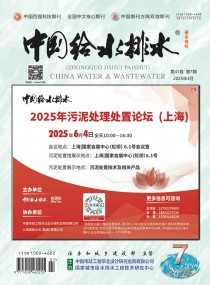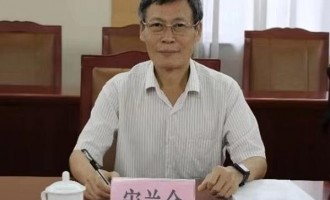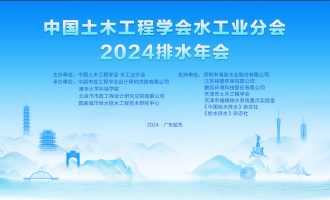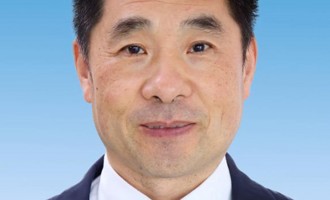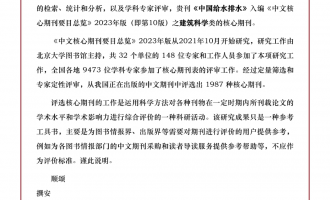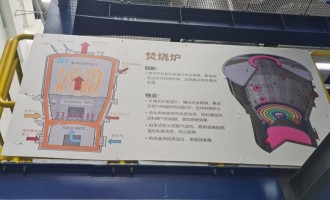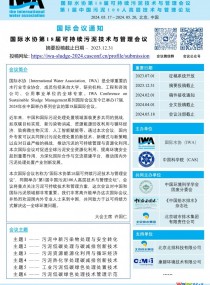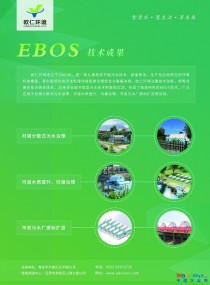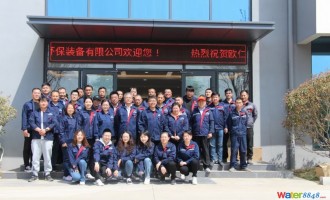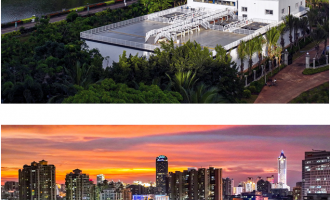分享到微信朋友圈
中国给水排水战略联盟 (309位行业代表了)
中国给水排水战略联盟
李俊峰:为何水比能源对中国更重要—中外对话
国家应对气候变化战略研究和国际合作中心主任认为,不同于石油,中国不能依靠进口水资源来发展,因此水安全将决定该国未来的能源结构
过去我们说中国是一个能源缺乏、土地缺乏的国家,但很少把中国看做一个缺水的国家。图片来源:emdurso
[新朋友]:点击图片上方 中外对话 关注
[老朋友]:点击右上角 ••• 分享到朋友圈
中国水危机:为何水安全比能源安全更重要?
李俊峰:中国是一个能源缺乏的国家,也是一个水资源缺乏的国家。水安全和能源安全都很重要且息息相关,但是水安全比能源安全更重要、更复杂,也更需要引起重视。从国家层面看,中国石油60%依赖进口,仍可维系;但若10%的淡水资源需要进口,对于中国这样的人口大国、制造业大国而言,将是不可想象的。
中国水危机:中国目前正在实施一项雄心勃勃的能源转型计划,其中最重要的一项任务就是在2050年前实现煤炭使用减半。在减煤过程中,水将发挥怎样的作用?
李俊峰:对中国而言,无论是“高煤”还是“低煤”时代,能源与水都密不可分。中国未来的能源布局应当将水作为一个重要的考虑因素。按目前的设想,我们希望煤炭使用量能够每年减一个百分点,其他能源的比例每年增加一个百分点。
煤炭开采、洗煤、燃煤发电、冷却、除尘、排渣等环节,都需要大量的水。有人可能会认为,减少煤炭使用会节省大量的水。但我们应该注意到,一些替代能源同样需要消耗大量的水。
以页岩气为例,中国计划天然气和页岩气年产量在2030年前达到4000亿立方米,仅开采环节每年就要消耗至少150亿立方米淡水。燃煤发电和燃气发电站都是中国的耗水大户。风能和太阳能项目也离不开水。
中国水危机:如你所说,所有能源都离不开水。根据现行的减煤计划,在能源转型后,能源耗水量是否会减少?
李俊峰:如果用天然气或核电替代煤,耗水量可能减不了太多。因为天然气开采、核电冷却都需要大量的水,核电比煤电用水还多。
中国目前的能源结构调整是“被动的”受制于水资源的制约。煤和煤化工都要以水资源来定,核电也是如此。核电所需的大量冷却水限制了它的选址,沿海核电站可以用海水冷却,内陆呢?抛开安全问题,在内陆发展核电只能建在大江大河上。海洋干枯的可能性很小,但内陆河湖干涸我们已经目睹很多了。未来能源选址、能源种类选择,都不得不考虑水的制约性。
中国水危机:煤炭产业发展已经强调“以水定煤”。现行的能源规划是否已经将水安全纳入其中?
李俊峰:现在还没有这么看待。我们过去对水资源没有那么重视,觉得水是天上掉下来的。过去我们说中国是一个能源缺乏、土地缺乏的国家,但很少把中国看做一个缺水的国家。其实中国的水资源绝不丰富,并且利用的不好,污染很多。
但是,现在应该是已经开始考虑这个问题了。从中央来说,李克强总理在“两会”上提出向水污染、大气污染、土壤污染“宣战”。中央很快出了“大气十条”,现在国家发改委等部门也在紧锣密鼓地编制“水十条”。可以说,现在对水的关注度已经提高到一个很高的水平上。
中国水危机:越来越多的科学研究显示,气候变化会对中国的水资源分布产生影响。这会否影响未来的能源决策?
李俊峰:短期看,水资源的地理分布限制着能源项目的选址。这一点已经在能源项目的前期规划中得到清晰体现——新项目需要在工程书中精确计算耗水量、明确水源供应渠道和应急水源方案。
长远看,能源布局不得不考虑气候变化因素的影响。国家气候中心曾预测说,中国将从“南涝北旱”的格局逐渐转变为“南旱北涝”。显然,降水分布的变化将对中国未来20至30年的能源格局产生重大影响。
以核电站为例,在核电站60年的运行周期里,气候变化的影响会比较清晰了。现在要在安徽、江西等内陆省份规划核电站,就是希望使用长江和鄱阳湖的水源。单位未来真的有那么多水可用吗?我持怀疑态度。鄱阳湖经常干涸,里面是可以放牧的。
中国水危机:现在公众的“反核”声音很大,核电规划会否搁置?
李俊峰:就我的观察,核电如果现在不建,那么以后可能会更困难。核电未来的发展,一是取决于替代能源的发展情况,二是取决于成本。如何未来风电、太阳能发展地很快,核电可能想做都做不了。核电的环保措施越来越高,也增加了发电成本,削弱了核电与其他能源的竞争力。美国现在的页岩气发电成本降到每度电5美分,风电大概5-6美分,天然气发电不到10美分;核电比谁都贵,谁还会投资?
在核电可有可无的问题上,国内有很多争论。不少支持核电的专家说,没有核电无法解决中国的能源问题。那我要问,有核电就能解决问题吗?中国计划在2020年至2030年间发展7000万到3亿千瓦核能。中国到2030年能源需求预计要到27到30亿千瓦。按这个数据,就算把全世界核电站都搬到中国,核电也只能解决中国能源消耗的不到10%。这是一个可有可无的比例。你说核电有多重要?
中国水危机:“十二五”期间,中国在西南地区批复了不少大型水电项目。你怎么看水电在中国的发展前景?
李俊峰:过去十年是水电的黄金时期,今后十年是收尾期。中国水电的发展已经是强弩之末,不是加速发展;80%的理论开发量都已经开发掉了。中国现在的水电已经接近2.5亿千瓦,未来最多能做到3.5亿千瓦。到2030年,中国大规模水电建设应当已经结束。
中国水危机:在雅鲁藏布江、澜沧江和怒江等富有争议的跨境河流上,也规划了许多大型水电站。你做何观察?
李俊峰:这些(水电项目)很可能不会开发了。额尔齐斯河、怒江、雅鲁藏布江等,地理位置遥远、地质条件复杂、开发成本高。许多项目选址在极其不稳定的地质带上,还有一些处于高风险的地震带上。在这些地区继续建水电,要慎之又慎。就像我说的,水电的黄金开发时期已经过去了。
从政治层面看,环保意识对高层决策的影响已经显现。前任总理温家宝在他的第二个任期里,已经大大减缓水电项目批复计划。大家都是慢慢在改变。
中国水危机:那么,中国未来的能源结构将如何调整?
李俊峰:这很难预测。我们必须汲取国外的经验,要两条腿走路:一是加速非化石能源的发展,二是把化石能源弄干净。对中国来说,最重要的是“多能互补”。
我不是反对核电,但核电只是能源发展中的一小部分。太阳能、风能、水能、天然气都要继续发展,最终过渡到非化石能源。
同时,我们应当提倡节能、提高能效。这是不得不做的。我们必须给“发展”戴上两个“龙头”:一是环境容量,二是能源容量。新项目批复必须满足不突破环境容量、不对能源容量带来多大损害的前提。具体到能源问题,就不能再批复需要大量耗水的项目;任何一个新建设项目,都必须提供水源供应的计划和合同。
在宁夏,新建燃煤电厂如果想采用“水冷却”技术,就得先找到水源。实际上,由于宁夏省的水资源基本已经分配完,新建项目没有别的选择,不得不采用节水措施,或改用耗水较少 “空气冷却”技术,但这都意味着成本的增加。
刘虹桥,中外对话与“中国水危机”合作的水项目分析师。加入中外对话之前,她供职于中国领先的财经媒体财新《新世纪》周刊和中国最有影响力的日报《南方都市报》,并获多个奖项。
Liu Hongqiao (LH): Why is water security more important than energy security?
Li Junfeng (LJF): China has been suffering from a nationwide shortage of energy and water resources. Water and energy security are both important and closely related. However, water security is more complex, and needs more attention. China’s oil demand can be met by importing 60% of its oil from other countries, but it wouldn’t be possible to ensure freshwater supply in this way – it would be unsustainable if a highly populated, global manufacturing country like China imported 10% of its water demand.
LH: China is currently undertaking an ambitious energy transformation plan. One of the most urgent tasks is to cut coal use by half by 2050. How will limited water resources shape this reduction?
LJF: For China, whether it is in a “high coal demand era” or “low coal demand era”, energy and water are inevitably linked. For future planning of the energy mix, water must be taken into consideration as an important factor. The current plan is to reduce coal use by 1% per year, while increasing the use of alternative energy sources by the same amount.
Coal mining, coal washing, coal plants, cooling and slag processing all require a lot of water. So people assume that cutting down on coal use will save huge amounts of water. However, we should bear in mind that some types of alternative energy also require large water consumption.
Take shale gas as an example: China plans to reach 400 billion cubic metres of shale gas and natural gas production per annum by 2030. This extraction process would require at least 15 billion cubic metres of freshwater each year. Both gas-fired and coal-fired power plants are also big water consumers in China. Even wind and solar power are also water consumers.
LH: All energy needs water, but will the reduced share of coal in the energy mix result in less water consumption in energy production?
LFJ: If natural gas or nuclear were to replace coal, water consumption may remain the same or even increase because natural-gas extraction and the cooling of nuclear plants requires even more water than coal. Water availability is critical to China’s current restructuring of its energy mix. Coal and coal-to-chemical industries rely on large amounts of water. Same for nuclear power – the huge demand for water for cooling significantly limits nuclear-power expansion, meaning coastal areas are favoured over inland areas. The sea will hardly dry out, but China’s inland rivers and lakes have already been greatly depleted. Water availability will greatly impact the future selection of energy sources and their locations.
LH: Water availability has been factored in for coal expansion. Has this translated to the whole national energy plan?
LJF: Not yet… we used to take water resources for granted. China has been describing itself as a country short of land and energy but rarely do we hear that we are water scarce. In fact, water resources in China are not abundant; moreover they are not being effectively used.
But the situation is changing. At central government level, premier Li Keqiang has declared “war” on water pollution, air pollution and soil pollution. The National Development and Reform Commission is also working on the “Water Pollution Prevention & Control Action Plan”. This is a very positive signal from the top.
LH: There is growing evidence of the impact of climate change on water distribution across China. Will this influence future decision-making about energy?
LJF: For decision-makers, geographical water availability limits the location of energy projects in the short term. New energy projects should clearly take into account future water demand both for operational and emergency needs. In the long run, energy distribution should consider the impact of climate change and changing climate patterns. According to recent studies by scientists from both China and abroad, the current pattern of “flood in the south and drought in the north” might gradually reverse and become “drought in the south and flood in the north”. The process will be slow but will have a significant impact on China’s energy planning for the next 20 to 30 years.
A nuclear-power plant has an operational lifespan of around 60 years, long enough for it to be exposed to impacts from climate change. Current nuclear plants are all located in coastal provinces such as Guangdong. There are plans to locate some of the new plants to inland provinces like Anhui and Jiangxi, with the hope of drawing water from the Yangtze River and Poyang Lake. But is there really enough water in the long term? I doubt it. We have already witnessed flow interruptions in the Yellow River as well as the depletion of Poyang Lake.
LH: Some proposed nuclear plants have faced resistance from the public. How do you see the future of nuclear-power development in China?
LJF: Well, in my view, if we are not building more nuclear-power plants now, it will be more difficult to build them in the future. The future of nuclear power also depends on the future development of other alternative energies. If wind power and solar energy continue to grow fast, there will be less space for nuclear power. Cost is another factor. More stringent environmental requirements have increased the cost to develop nuclear power, making it less competitive than others. For instance, in the US, after the big fall in the cost of shale-gas extraction, no one is willing to invest in new nuclear plants.
Within China, there are lots of debates going on. Those who support nuclear power claim that China will not be able to achieve energy security without nuclear-power development. But is this true? China plans to develop 70-300 gigawatts of nuclear power by 2020 and 2030, while total power installation will reach 2,700 to 3,000 gigawatts by 2030. So nuclear power will only account for around 10% of total demand, making it optional rather than essential.
LH: Under the 12th Five-Year Plan, quite a few large-scale hydropower projects were approved in the south-west. Where do you see hydropower heading?
LJF: The past decade was the golden age for hydropower in China, but the next decade will see an end to this boom. In essence, China’s hydropower development is “a spent arrow”. Hydropower is no longer rapidly growing; 80% of China’s available hydropower resources have already been developed. China’s hydropower capacity has reached 250 gigawatts and is expected to increase to 350 gigawatts in the future. Hydropower development should likely reach its final stage by 2025 and by 2030 China’s massive hydropower construction should be finished.
LH: What about the planned large-scale hydropower expansion on transboundary rivers such as the Yarlong, Nu and Lancang rivers?
LJF: They are very unlikely to be developed. Many of these projects are proposed to be built in areas with extremely complex geological conditions, some even in extremely unstable zones with high risk of earthquakes. To build hydropower in those areas requires great care. As I said, the golden age for hydropower has passed. From a political perspective, the high-level decision-makers are also more and more aware of the importance of environmental protection. Former premier Wen Jiabao approved far fewer hydropower plants during his second term than his first term. Change is slow, but it is happening.
LH: So what do you think China’s optimum future energy mix looks like?
LJF: It is hard to predict, but we do have lessons to learn from other countries. We need to “walk on two legs”: one is to accelerate the development of non-fossil fuels, and the other is to make fossil energy cleaner. For China, the most important is to have a balanced energy mix.
I am not opposed to nuclear power, but as I said, nuclear development will only make up a small portion of total energy needs. We need to keep developing solar, wind, hydro and natural gas and eventually shift to non-fossil energy sources.
With regard to China’s future energy plan, we need to increase energy efficiency and save energy at the same time. Actually this is a must. We must ensure China’s economic development stays within both its environmental capacity and energy capacity. Approvals should only be given to projects with limited impacts on the environment and energy security. No more water-intensive energy projects should be implemented. Every construction project should be required to provide a water-supply plan.
Take Ningxia province as an example; new coal plants wanting to use water-cooling technologies must find water sources to meet their demand. In reality, water quotas in Ningxia province are almost used up, leaving little water allocation for newcomers. New plants, therefore, have no choice but to adopt the most advanced water-efficient technologies or switch to air-cooling.
This is an edited version of an interview published by China Water Risk
--------------------------------------
"中外对话"是世界上致力于环境问题的第一个完全双语网站,旨在发布高质量文章,提供双语信息,促进直接对话,为我们共同面临的环境挑战寻求解决方案。











